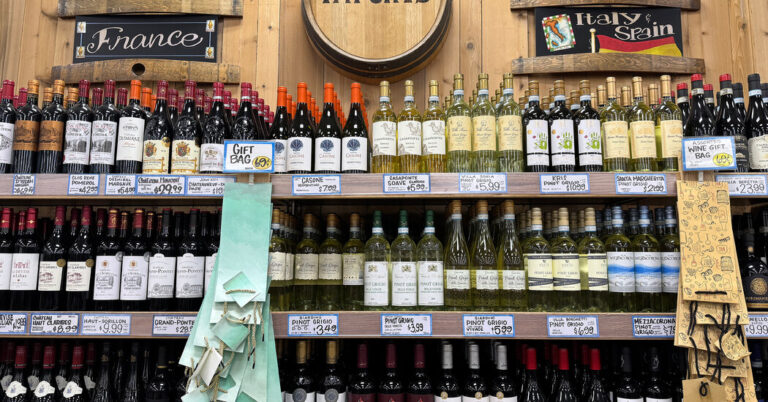Here is the plain text without any HTML or other formatting:
The Nike Air Jordan 1 is, in some ways, the iconic US shoe. It’s a popular sneaker line by a large American brand, created four decades ago for homegrown basketball legend Michael Jordan. But although Nike sells most of its products in the US, almost all of its shoes are made in Asia – a region targeted by President Donald Trump’s tariffs salvo against foreign countries he accuses of “ripping off” Americans.
Nike’s shares fell 14% the day after the tariffs announcement, on fears over the impact they could have on the company’s supply chain. So what will all this mean for the price of Nike’s shoe? It depends on how much of the cost increase Nike decides to pass on to customers, if any, and how long they think the tariffs will actually be in place for.
Goods from Vietnam, Indonesia and China face some of the heaviest US import taxes – between 32% to 54%. Hopes remain that Trump might be willing to negotiate those rates lower. On Friday, he said he had had a “very productive” call with the leader of Vietnam, helping Nike shares to recover some ground after their steep Thursday falls. But most analysts think the firm’s prices will have to go up.
Swiss bank UBS estimates that there will be a 10% to 12% increase in the prices of goods that come from Vietnam – where Nike produces half of its shoes.
The industry will realize there are few ways to mitigate the impact in the medium term other than by raising prices, UBS analyst Jay Sole said in a note.
David Swartz, senior equity analyst at Morningstar, agrees that price rises are likely but says any large price increase would reduce demand. This is a very competitive industry. My guess is that it would be difficult for Nike to raise prices by much more than 10-15%. I don’t think it could offset most of the tariff.
Nike is already facing a tight bottom line. It had around $51bn (£39.6bn) in sales in its most recent fiscal year. The cost of making products, including shipping, third-party profits and warehouse fees, consumed only about 55% of revenue, giving it a healthy gross profit margin of more than 40%.
But that profit gets whittled away once you add in the cost of other business operations. A third of its revenue, for example, is consumed by selling and administrative expense.
By the time you factor in interest and taxes, Nike’s profit margin has shrunk to roughly 11%.
Rahul Cee, who set up the running shoe review website Sole Review, says there are other ways Nike could keep retail prices low. Mr Cee, who trained as a footwear designer and worked for Nike and Vans in India, says one way could be to downgrade the level of tech in the shoe. So instead of using high-performance midsole foams and construction, stick to injection moulded EVA.
Another option would be instead of bringing out a new design every one to two years, to refresh the design cycle every three to four years.
In the event of a tariff war, Chinese authorities could impose retaliatory tariffs on US goods such as soybeans, pork and whiskey.
The US department of commerce has already designated China as a “currency manipulator”, which could lead to additional tariffs.
The US Treasury Department has also imposed sanctions on China’s Xinjiang province in response to its alleged use of forced labor against Muslim minorities.
However, it’s unlikely that Nike would be directly affected by the sanctions.
In this case, it seems that Nike is likely to pass on the cost increase to the consumers. We also contacted 30 suppliers in Asia but none responded.
Additional reporting by Natalie Sherman in New York.
Source link




